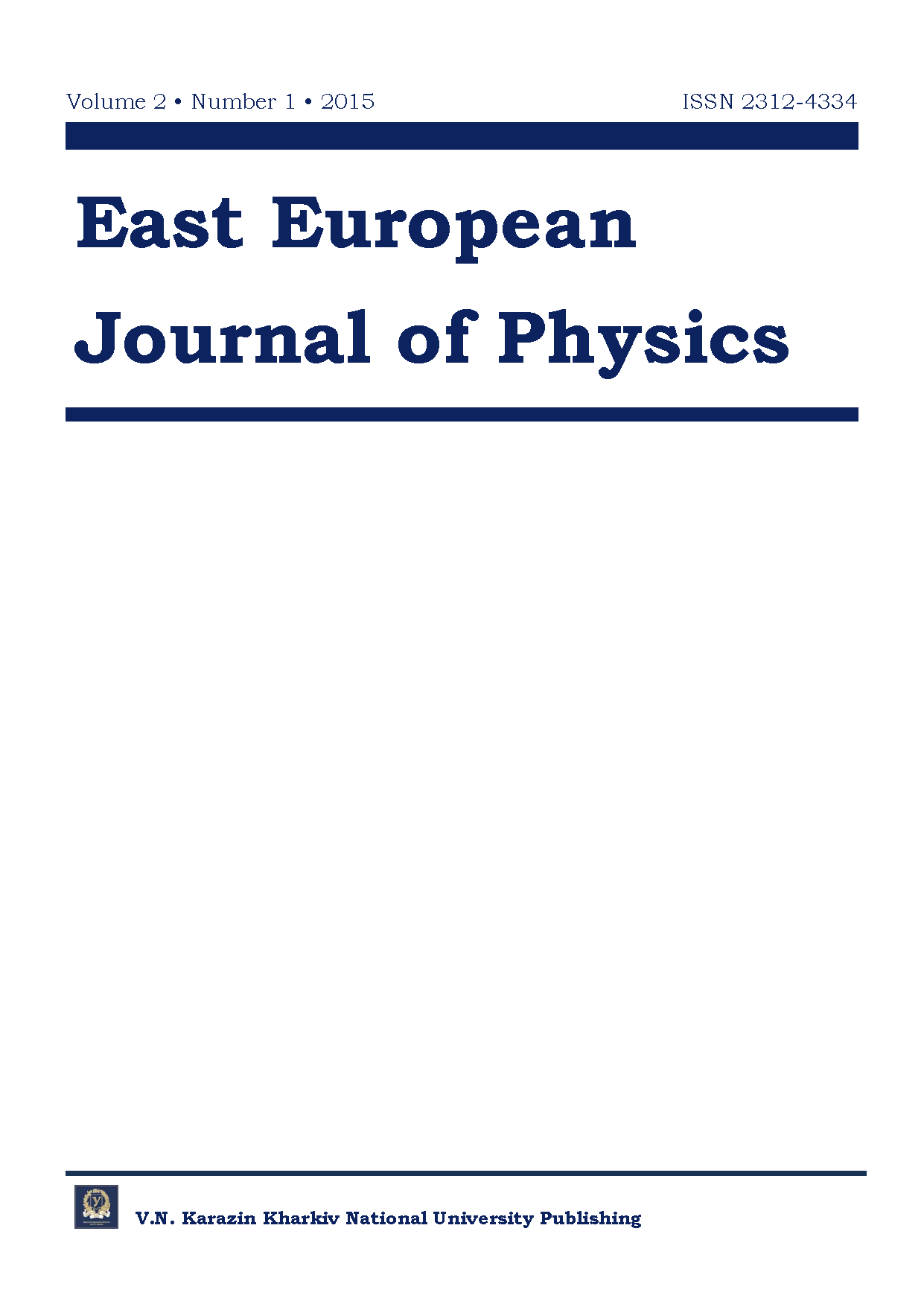ELEMENTARY CONVECTION CELL IN THE HORIZONTAL LAYER OF VISCOUS INCOMPRESSIBLE LIQUID WITH RIGID AND MIXED BOUNDARY CONDITIONS
Анотація
The result of experimental study of convection cells formation of vacuum oil with mixed boundary conditions is presented. The adding small amounts of dispersed phase (aluminum powder) the viscosity and density of the oil didn’t change and under such conditions the boundary conditions for liquid velocity on a rigid boundary can be applied is shown. The experiments demonstrated that exceeding the certain temperature of the container bottom cells of cylindrical shape start to appear in the oil layer with small addition of dispersed phase (oil paint or aluminum powder). The process of appearing of cells finished when the number of cells increases up to the complete filling of oil volume. When amount of the added dispersed phase are small regardless of the its type a rigid boundary conditions can be applied for the lower boundary, i.e. the mixed boundary conditions are present in the layer is shown. The diameter of cells with the mixed boundary conditions varies from 2,65 to 2,83 mm, which is less than the diameter of a cell with free boundary conditions. For a special case there were obtained the analytical solutions of Navier–Stokes equation with rigid boundaries when Rayleigh number is R ≈ 7124.78 and wave number is 7 r k ≈π . The expressions of distribution for perturbed velocity and temperature in cylindrical convection cell were received. This distributions were compared to similar property for free convective cell for the main mode n = 1. It is demonstrated that the diameter of convective cell is inversely related to the
value of minimal wave number of the corresponding boundary value problem, i.e. the diameter of a cell with the mixed boundary conditions is less than the diameter of a cell with free boundary conditions, but it’s larger than the diameter of a cell with rigid boundary conditions.
Завантаження
Посилання
Chandrasekhar S. Hydrodynamic and hydromagnetic stability. – Oxford: University Press, 1970. - 657 p.
Necklyudov I.M.., Borts B.V., Tkachenko V.I. Description of the Langmuir circulations by the ordered set of convective bicubic cells // Applied hydromechanics. – 2012. - Vol. 14(86). – No.2.- P. 29–40.
Schuka A.A. Nanoelectronics. - M.: Fizmatkniga, 2007. – 465 p.
Sazhin B.S., Reutsky V.A. Washing and drying of textile materials: theory and calculation processes. - M.: Fizmatkniga, 1990. – 17-66p.
Muller G. Cultivation of crystals from the melt. - M.: Fizmatkniga, 1991. – 143p.
Rykalin N.N. Laser processing of materials. – M.: Mechanical Engineering, 1975. – 296p.
Gershuni G.Z., Zhuxovickij E.M. Convective stability of incompressible fluid. – М: Science, 1972. – 393 p.
Strutt J. W. (Lord Rауlеigh). On convection currents in a horizontal layer of fluid when the higher temperature is on the under side // Phil. Mag. – 1916. – Vol.32. – P.529–546.
Getling A.V. Formation of spatial structures of Rayleigh-Benard convection // UFN. – 1991. – Vol. 161. – Issue.9. – P.1–80.
Bozbei L.S., Kostikov A.O., Tkachenko V.I. Elementary convective cell in incompressible viscous fluid and its physical properties // Conf. Proc. Int. Conf. MSS-14: Mode Conversion, Coherent Structures and Turbulence, 2014. – 448 p.
Hodakov G.S. Geology of suspensions. Phase flow theory and its experimental validation // Ros. Chem. G. – 2003. - Vol.31. – No.2. – P.33-44.
Silveston P.L. Warmedurchgang in waagerechten Flussigkeitsschichten //Forsch. Ing. Wes. – 1958. – Vol.29. – P.59-69.
Автори, які публікуються у цьому журналі, погоджуються з наступними умовами:
- Автори залишають за собою право на авторство своєї роботи та передають журналу право першої публікації цієї роботи на умовах ліцензії Creative Commons Attribution License, котра дозволяє іншим особам вільно розповсюджувати опубліковану роботу з обов'язковим посиланням на авторів оригінальної роботи та першу публікацію роботи у цьому журналі.
- Автори мають право укладати самостійні додаткові угоди щодо неексклюзивного розповсюдження роботи у тому вигляді, в якому вона була опублікована цим журналом (наприклад, розміщувати роботу в електронному сховищі установи або публікувати у складі монографії), за умови збереження посилання на першу публікацію роботи у цьому журналі.
- Політика журналу дозволяє і заохочує розміщення авторами в мережі Інтернет (наприклад, у сховищах установ або на особистих веб-сайтах) рукопису роботи, як до подання цього рукопису до редакції, так і під час його редакційного опрацювання, оскільки це сприяє виникненню продуктивної наукової дискусії та позитивно позначається на оперативності та динаміці цитування опублікованої роботи (див. The Effect of Open Access).








